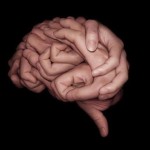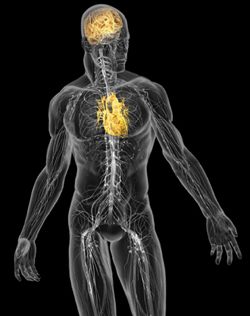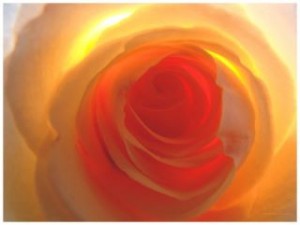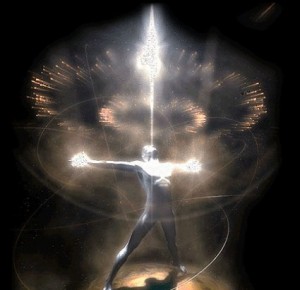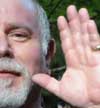Using Polar Opposite Energy to Heal
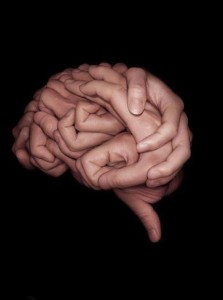 I have acquired a deep understanding that helps me all the time.
I have acquired a deep understanding that helps me all the time.
My understanding is, that just as much as a physically or emotionally traumatic event could change my life for the worse, a physically or emotionally healing event could change my life for the better.
A physically or emotionally traumatic event would make it more difficult for me to be present, I might not enjoy my connection to others as I had previously and it could be more difficult to experience bliss, relaxation and pleasure in my body.
A physically or emotionally healing event would make it easier for me, to be more present, I would enjoy my close connection to others and I would enjoy opening to even more comfort, bliss and pleasure in my body.
When I learned how to transform (or rewrite the conditioning from) physical or emotional trauma in my brain… trauma no longer was going on for years hurting my body, brain and soul, I had transformed it to something good for me.
I want to share it with you because I know you will enjoy helping someone you love transform a physical or emotional problem that has plagued them for years, to something wonderful.
During the exercise we will take the trauma energy, that is powerful and connect an energy that is the opposite but equally as powerful.
This is similar to uniting the energy of two polar opposites. In this process, we will be creating something stronger and more beautiful than we may even be able to imagine now.
 When we are injured with emotional or physical trauma, we may lose volition, we may become confused, we may be frightened, we may be disoriented, our brain may be tired from thinking and we may feel we are more vulnerable. The loss of power and freedom are common for people that develop P.T.S.D., are indoctrinated into a cult or experience a physically debilitating injury to their body.
When we are injured with emotional or physical trauma, we may lose volition, we may become confused, we may be frightened, we may be disoriented, our brain may be tired from thinking and we may feel we are more vulnerable. The loss of power and freedom are common for people that develop P.T.S.D., are indoctrinated into a cult or experience a physically debilitating injury to their body.
What is the polar opposite energy to something that disconnects us from our body and soul? I help my patients add a loving, caring and compassionate energy to the traumatic energy and the two energies together become something transformative. After the work a person has a deeper healing connection to their body and emotions, that enhance life greatly.
This deep connection to ourselves brings a birth of aliveness and strength, that only someone that has experienced healing after loss could experience. The deeper connection to self and the greater opening of our heart transform the loss. Perhaps this was not possible before the appreciation of what we lost and what we gained through love and rebirth after our loss.
Without the cold and dark winter, would spring’s blossoms smell as sweet?
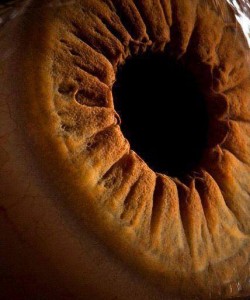 Enlightenment begins when we look within. We ignite a fire to see more deeply within and we feel a connection to self that is also a connection to much more…eventually we experience and understand our personal development is also the key to our spiritual growth.
Enlightenment begins when we look within. We ignite a fire to see more deeply within and we feel a connection to self that is also a connection to much more…eventually we experience and understand our personal development is also the key to our spiritual growth.
The following is an example of a physical transformation after a physically traumatic injury.
A patient that I had treated in the past, let us give him the name Jack Sr. came by and asked me if I would look at his son’s back and tell him if there was anything I could do to help Jack Jr.
Jack Sr. told me his son spent the previous weekend at the Dunes in southern Oregon, riding a Yamaha Banshee. Jack Jr. went with employees and friends and they brought their motor homes, their quads and four wheel drive racers with them to the dunes intending to spend the weekend riding and having fun.
Jack Sr. told me his son, Jack Jr. went up one of the dunes as fast as he could and flew off the top, expecting there would be another descending hill on the other side. There was nothing but a sheer fifty foot drop. Jack Jr. landed on his quad at least fifty feet below the place he launched from.
Jack Sr. told me his son went to the hospital immediately and has spent the last week in the hospital. Jack Sr. said the neurosurgeons, orthopedic surgeons and physiatrists told Jack Sr. that his son had 3 crushed vertebrae, 4 crushed discs and several broken vertebrae.
Jack Sr. said they wanted to put rods in his son’s back at first but some doctors told him the vertebrae were in so many pieces and there was a spondilolysthesis, an anterior slippage of a portion of his spine and then a lower portion was pulled back behind it. Jack Sr. said some doctors wanted to fuse his spine and told Jack Sr. they thought his son would always have a big lump in his back and would be bent forward, at the throracco-lumbar area, the site they wanted to stabilize. Jack Sr. told me they wanted to have some time, to figure it out.
Thirty minutes later, Jack Sr. was at my door with his son Jack Jr. Jack Jr. had a large hunch in his back and was bent forward so he looked like a prawn, he could not raise up to see my face, he was looking at my shoes. Jack Jr. bent forward in the middle of his back just below his ribs.
I palpated Jack Jr’s. injury’s. I told Jack Jr. that his broken bones were the result of the muscles in his back being torn and as they tore they broke the vertebrae by pulling them apart. As the muscles contracted powerfully the resistance to the weight of the impact caused tearing and after tearing each muscle, it would “guard” itself instantly from further injury by shortening and thickening. The muscles are stronger than bones so they would tear and break the bone it was attached to, before the muscle ripped apart. Jack you were not just smashing these bones you were tearing them apart because of the shearing energy that would have torn you apart.
I informed Jack Jr. that his torn muscles were a bigger problem than his broken bones. I told Jack Jr. that without our muscles directing our bones, we would be just a pile of bones….but when his muscles went back functioning in a healthy way, his bones would be the anchors they once were for his muscles and back. I told Jack Jr and Sr. we would need to work hard every day for hours, so the muscles could heal as fast as possible. I made sure Jack Jr. understood that the key was to not just relax the torn muscles and prevent further injury but to also heal the brain that got injured, so it would not continue to carry the trauma of the accident…a trauma that could and probably would give him lasting problems if not fixed.
I told Jack Jr. that I would be glad to help him heal and I hoped he would be able to do more than he could before the accident.
Jack Jr. told me the doctors told him not to expect to be able to do much in the future and he should understand that he will need to change his life to moderate the pain and prevent further injury, that could cripple him.
In two months Jack Jr. and I were working out on weights at a local gym. In four months we were working out very hard and Jack Jr. told me he could see his abs for the first time in his life. In five months Jack Jr. told me he was in, “by far the best shape of his life” and was so amazed because he never imagined he could look and feel so good. We would work out for two hours on weights and bike ride for two hours afterward every day.
Six months after the accident Jack Jr. asked me about riding quads again. I told him he was responsible for his body now and I knew he would take care of it and have fun ….and Jack Jr. did continue working out and did have fun riding quads that weekend and many weekends since.
How did Jack Jr. recover so quickly?
These are a rough outline of the steps. I hope these steps give you an idea about what it takes to give someone the polar opposite energy, in the same amount or greater so there can be a transforming experience as a result.
If you have any questions about physical or emotional trauma work please feel free to call or write me.
1) I connect with the patient and understand how much pain there is. Then I work to understand how much damage there is and what amount of time, every day….I will need to help the patient. My intention is about understanding that I need to hear the “crying” of a person’s body and soul. After I hear the crying I help the person hear their own body and soul as well. The next part of the first step, is to provide comfort to the extent that my energy and comfort more than offset the energy and pain of the trauma so a person feels wonderful because of my care.
2) I help the person connect to everything their body and emotions are saying and help them connect deeply with compassion and caring in the same manner I am, by participating in everything I do. I ask the patient to describe the feelings in their body at first and then after they are comfortable and capable of describing their pain, I ask them to breathe deeply as I comfort and relax their muscle ….and I ask them to breath right into that specific muscle. I have the person lovingly send consciousness, movement, healing, oxygen and blood to their muscle and feel it relax as we work, together every step of the way towards their health.
3) I consider the entire time someone is in physical or emotional pain, traumatizing. I not only work on the area that was hurt, I work on the person as a whole with the understanding that their entire body will want comfort and care, when just a part has been injured. I try to spend hours with someone every day that has had a serious traumatic episode, because the sooner they feel wonderful the sooner we can move to the following steps.
4) The next step after a person’s body and soul feels safe, because of my loving care, is to have them connect their focus to various areas of their body and continue the exercise of relaxing and breathing into the muscle, so that a wonderful awareness, consciousness and connection to that muscle is now available. My intention is for the patient to be able to move and relax each muscle separately and be able to connect and feel it move by itself and enjoy the change “that is happening to their brain and body. The new “consciousness” is an addition to their ability to have volition, presence, comfort and control, things they had taken from them but they will have in full measure very quickly.
5) The conditioning created by trauma, that gave us less volition and power… we transform and have more volition and power than we dreamed of, so we can open our heart safely and connect to our self more deeply.
One of the most healing things for our emotions and body is to allow someone to lovingly massage us for hours every day. After trauma, we are vulnerable and need comfort and care.
In general people have more difficulty receiving love than giving love, so it is empowering to receive love and care.
The next part of this step is giving someone some things to do themselves to feel wonderful. I show people how to use trigger points and massage their neck and stretch it and breathe into each muscle they want to relax while they do this. I feel the greatest healing comes from empowering someone to care about their own body, emotions and being.
6) We begin to do range of motion exercises, together and if possible some resistance exercises that will make us feel stronger afterward. I start working as their training partner, not their trainer or healer. As a person’s training partner, the work I do pushes them and the effort they put in pushes me and they see how much they push me and work harder …and have fun.
7) I use ultrasound, Chattanooga hydrocollator packs, Chattanooga ice packs, a physio-therapy G-5 massager as well as my own hands to help someone feel good physically and emotionally, so doing a small amount of exercise does not put more stress on someone, I make sure to remove the lactic acid and have the client feel wonderful before and after we work out together, so they feel better after they exercise. The bonus of feeling better after working out is again, added volition and a feeling of excitement about the future.
8) I continue working with a person until they can do more than I can working out. When my client is pushing me to keep up, I know it is time to let them fly and know I will surely see them again on this path.
Emotions for Presence and a Higher Consciousness
 What is it that turns up our senses and gives us presence when we are entering different situations? I remember walking by roses many times and they were nice but I was not amazed by them, nor do I remember stopping to smell them.
What is it that turns up our senses and gives us presence when we are entering different situations? I remember walking by roses many times and they were nice but I was not amazed by them, nor do I remember stopping to smell them.
There have been times when I was sad, I would walk by roses and barely remember them as background. I barely could distinguish them from everything else. There are also times that I have been in love, walked by roses and been swept away with their beautiful smell and appearance. I would enjoy each moment and be more present than ever just being near the rose bush. I would notice the aphids and ladybugs, the thorns, the various amounts of blossoming and how each blossom no matter little or much it had opened had a different beauty. I would even notice how beautiful and fragrant the petals on the ground were. I would enjoy every moment and remember that I wanted to share this beauty with the person I loved.
Why was I able to be so much more present and aware of my senses, when I was in love? What happened that made it so I was not even aware of my senses when I was sad?
The information about the rose, the sight, the feeling of the petal, the sound of the breeze in the leaves and the fragrance of the rose are gathered together in our fusiform gyrus. From the fusiform gyrus the information is then sent to our limbic system and to the amygdala.
The amygdala adds value and meaning, to what we see, which is a way of preparing us. Is this a danger, is this something wonderful, is this something we run from, is this something we rush to? All of this is determined by the value and meaning our amygdala puts on what we look at. It is essentially the difference between looking and seeing.
There are many things that will have a different value and meaning to us, depending on how we experience ourselves at that particular moment. How we experience ourselves is determined by the amygdala as well.
This may seem complicated but it is essential to understanding how we experience the world. How we experience ourselves influences our experience of other sensory things. The emotional value and meaning we place on ourselves, “how we feel about ourselves and see ourselves”….will alter the lens we use to see the world.
The world changes depending on how we feel. We do not see others as they are, we see them as we are. When we have clarity we are able to distinguish between good and bad people. This clarity is an awakening.
When we have an emotional loving feeling about ourselves, we are able to experience much more. When we “feel” love for ourselves, we reward ourselves with a feeling of aliveness and presence, which heightens our perceptions and allows us to see with much more clarity. We are able to not only look at the rose but experience all of its beauty. We are also able to distinguish what is not good for us as well.
When we have healthy feelings about ourselves, we have the ability to be present and conscious.
The value and meaning the amygdala puts on what we sense, in this case a rose, will determine what happens in our brain. For those of us that want to be present, open our heart or be enlightened, what happens automatically in our brain is very important.
If we are worried, the limbic system reroutes our energy and attention to our cingulate gyrus where we focus our thoughts. In this way our brain is helping us find out what we are worrying about. At this time we do not send much information to our amygdala, we do not add value and meaning to things that do not involve our safety and a rose has little meaning to us at this time.
If we are trying to suppress our emotions by thinking instead of feeling, the meaning of a rose is very little as well.
If we feel love, we are deeply opening our emotions, or as we say “our heart” and a rose is something we see, want, share and enjoy.
With love, the emotional value of the rose cascades as a waterfall into our autonomic nervous system, the sympathetic stimulation opens our pupils and how much value and meaning the rose now has to us, can be measured by a galvanic skin response.
When we are in love, we see a rose and think of the person we want to share the rose with, we release neurotransmitters, dopamine and norepinephrine. These neurotransmitters give us a feeling of excitement and heightened perception. If we have been with the person we love long enough to have a bond, we will release endorphins and enkephalins, as we hold the rose and feel the love. The endorphins and enkephalins are powerful natural narcotics that give us a sense of comfort, safety and well being. If we share a rose with someone we share love with, we may release a neurotransmitter called serotonin, this neurotransmitter will give us a feeling of oneness.
The emotional value and meaning we add to sensory information, can bring great clarity to our lens. Our senses and thoughts are a component of perception, the emotions we have are the anchor that make what we see memorable.
How can we stop the “worry circuit”?
Welcome back to another in the series of blogs about how our brain automatically alters our story and reality.
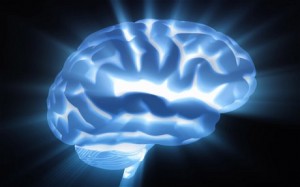 In our brain there is an actual “worry circuit” that is there to help us focus on genuine risks and gives us cause to feel concern so we do something to reduce the risk of a real problem for us.
In our brain there is an actual “worry circuit” that is there to help us focus on genuine risks and gives us cause to feel concern so we do something to reduce the risk of a real problem for us.
The worry circuit automatically alters our focus and thoughts, that is its purpose.
If our early conditioning gave us lots of reasons to worry, our perspective may be that we are vulnerable to things happening “to us”.
If we were conditioned to worry too much, it is generally because we learned an affect of fear or apprehension that may not have had a basis in reality. This is an affect we picked up from a parent that had anxiety and fear. Conditioned fear is passed down easily. It is time we got rid of this fear so other generations can live a better life.
The problem for us is that if our conditioned fear makes us worry, we feel vulnerable and experience our life as a nightmare. Sometimes we feel fear and do not know why, as in a nightmare where something is chasing us that we are unable to see.
When we are awake we look for what is causing our fear and often continue looking until we find something. The problem for us is we add “how we feel about something” to what we see to get the value and meaning it has for us. If we are anxious we may be irritable, tense, in pain from guarding in our body and more without being in touch with how we feel. If we add how we feel to how we feel about someone, when we are anxious….yikes. Even if we are at the effect of an illusion, we do not know this is happening. Our brain does not like to focus our attention on how we feel inside when we are on alert.
The worry circuit is supposed to help us focus, not feel vulnerable. When we feel things are happening to us, instead of feeling we have challenges we enjoy, the theme to our life becomes similar to Dorothy in the Wizard of Oz. Dorothy, the Tin Man, Scarecrow and Cowardly Lion all were paralyzed by fear and felt vulnerable, not capable.
The place that creates this feeling of vulnerability is very powerful, the neural traffic from this part of our brain to our verbal brain is like a super highway and the neural traffic from our verbal brain to the operating system of the brain is like a small country road. Our thoughts are an afterthought to the feelings the operating system of our brain creates within us.
When we rewrite the non-verbal information that creates our fears, we move the nightmare we live, our illusions and anxiety is gone. The “worry circuit” can now operate the way it was intended, to help us focus for something short term to get it accomplished.
Addendum to the above:
In a situation where someone has O.C.D. it is helpful to both rewrite how they feel about themselves in the situation, as well as have something positive to accomplish instead of worrying, so the circuit can calm down.This usually involves finding a hobby to do instead of repetitive behavior.
Overcoming overwhelming sadness
Overcoming overwhelming sadness without becoming depressed, phoney or thinking it was our love that hurt us.
Let me begin by saying that this is not going to be any nonsense about how to think or what ideas you should have. Telling someone what to think when they are hurt is ridiculous.
This is about growing during grief or loss. Growth is something that improves the chemistry in our brain. If we have a healthy chemistry in our brain during loss we can experience sadness but also see our light shine so we can see our way out of the darkness.
In part one of this work, we have exercises for the loss and sadness we feel from the end of a relationship or from the end of a career or job.
There is loss in relationships, a parent passes or someone we love leaves us. We have the opportunity to grow by allowing ourselves to continue to feel the way we did about ourselves because we were loved.
We should feel good to spite the people that were not good to us and if someone was good to us, we should feel good in memory of them. In either case, we have the opportunity to understand that we have the power to make ourselves feel good. When we understand we can and should feel wonderful even though we miss someone and are sad, we learn to turn on our light and a little light removes a lot of darkness.
This exercise is to help us have a better brain chemistry and feel our power during sadness.
Feeling good about myself.
Click on the above exercise.
The next type of loss is of career. There are times we do not succeed at what we are doing. If we are doing something because we admire ourselves for doing it but do not enjoy what we are doing, we may not make it work. There are things I thought would be a great achievement for me but when I found out they were phoney I was not able to do them. I would be sad because I had wanted to feel good from the success and did not know how to get that feeling otherwise. When I learned how to unconditionally love myself, I was able to give myself rewards for being honest and real. I was able to work hard at things that were outside of “the box” and give myself rewards because I was proud no matter what anyone else thought.
There are times we do enjoy something and just lose our job because of slow business. How do we give ourselves the rewards we got when we were working hard so we could have a good brain chemistry and not get depressed, petty or irritable? We have to learn how to reward ourselves all the time so we have the ability to do more and overcome tough times.
The following exercise will help us to grow from the difficulty and become more of a person we will respect and admire.
Can we give ourselves permission to feel good?
Click on the above exercise.
Giving ourselves the feelings we need, to have the strength to grow
Click on the above exercise.
